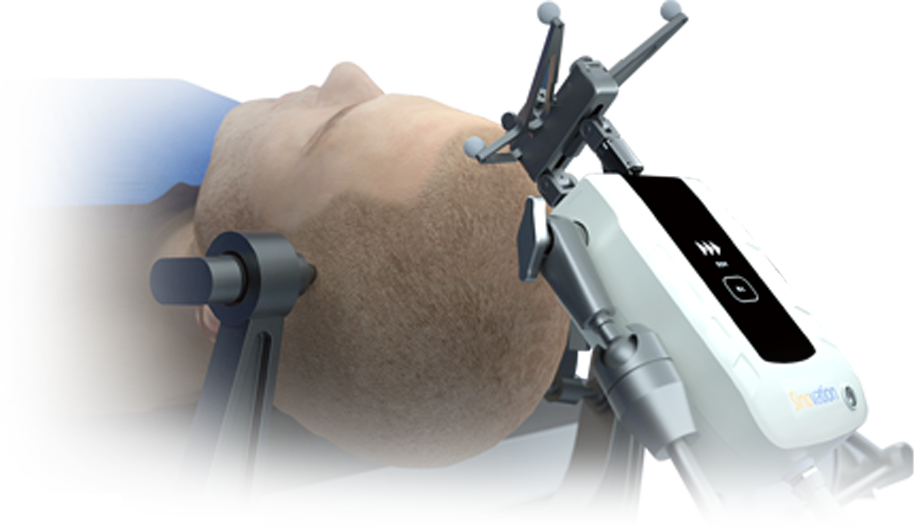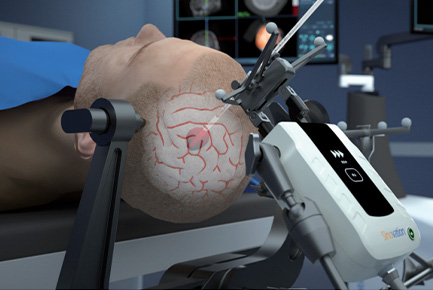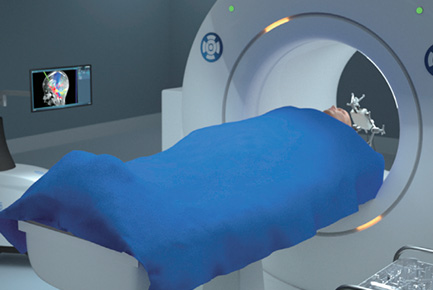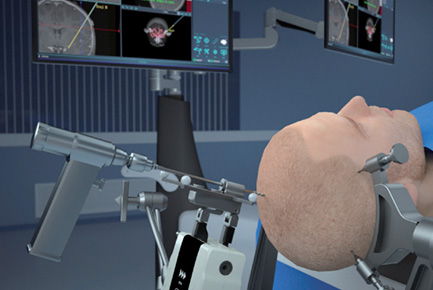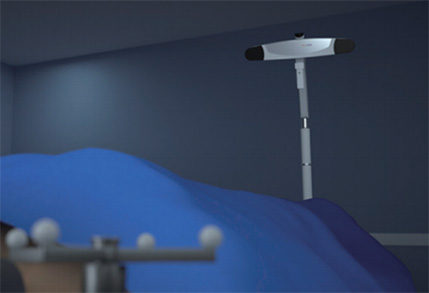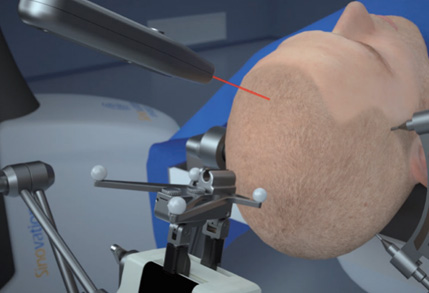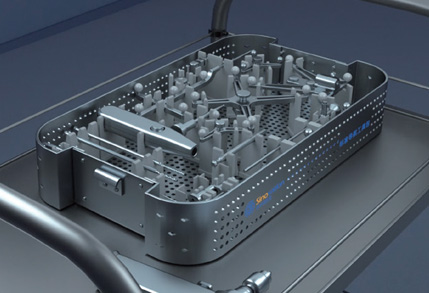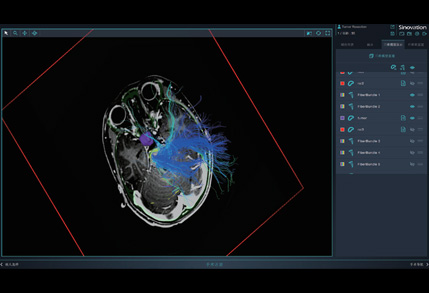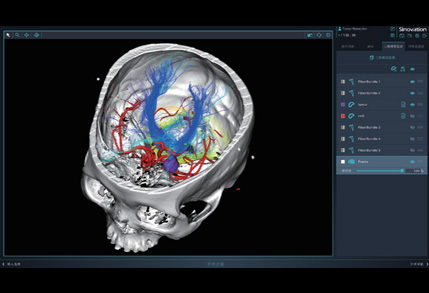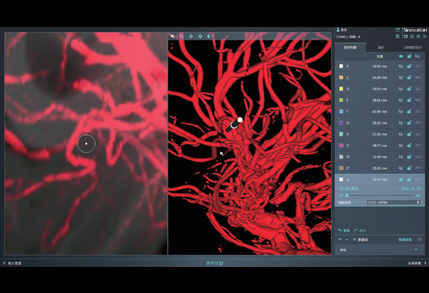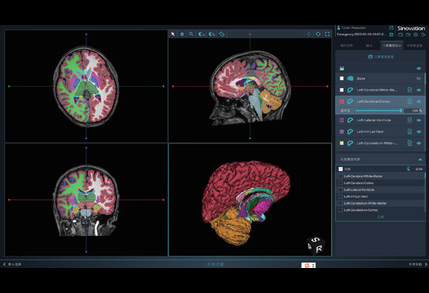Traditional stereotactic frame operations are complex and time-consuming, as well as causing significant physical and psychological pain to patients. However, these issues are now a thing of the past! The mini robot positioning device strictly follows the surgical plan, automatically completing a rapid, comprehensive frame-less stereotactic procedure, guiding doctors in safely and precisely placing minimally invasive surgical instruments, such as drainage tubes and biopsy needles, at the predetermined target location.

